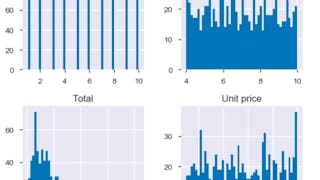Analyzing data with Python is a key skill for aspiring Data Scientists and Analysts!
This course takes you from the basics of importing and cleaning data to building and evaluating predictive models. You’ll learn how to collect data from various sources, wrangle and format it, perform exploratory data analysis (EDA), and create effective visualizations. As you progress, you’ll build linear, multiple, and polynomial regression models, construct data pipelines, and refine your models for better accuracy. Through hands-on labs and projects, you’ll gain practical experience using popular Python libraries such as Pandas, NumPy, Matplotlib, Seaborn, SciPy, and Scikit-learn. These tools will help you manipulate data, create insights, and make predictions. By completing this course, you’ll not only develop strong data analysis skills but also earn a Coursera certificate and an IBM digital badge to showcase your achievement.
















